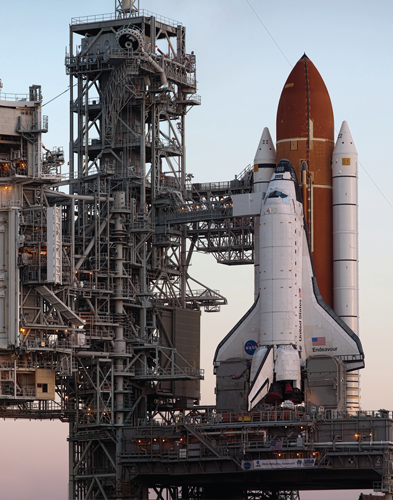Trends, emerging risk and opportunities for aviation and space insurance.

Lloyd’s has always had a reputation for innovation and is a pioneer when it comes to insuring aviation and space activities.
The first-ever aviation insurance policy was written by Lloyd's in 1911 and although it stopped writing policies a year later after bad weather caused a series of crashes, in 1919, far-sighted underwriter Cuthbert Heath started the British Aviation Insurance Association.
In 1965 the first space satellite insurance was placed, covering physical damage to the Intelsat 1 on pre-launch, and from 1974-1982 the market underwrote other satellites for up to US$100 million each. In 1984, Lloyd’s launched a successful salvage mission to reclaim two rogue satellites, sending a shuttle and five astronauts into orbit.
With expertise earned over centuries, Lloyd’s is the foundation of the insurance industry and the future of it. Led by expert underwriters and brokers who cover more than 200 territories and countries, the Lloyd’s market develops the essential, complex and critical insurance needed to underwrite human progress. Lloyd’s can develop tailor-made policies for every customer in every sector and it covers more than 60 lines of insurance and reinsurance including space and aviation.
London underwrites 60% of the global aviation market. In 2016 aviation accounted for more than US$1.2 billion in gross written premium for the Lloyd’s market, with space contributing US$200 million gross written premium to the total. Multiple syndicates at Lloyd’s underwrite space and aviation, demonstrating strong underwriting discipline and sophisticated pricing modelling techniques. Currently Lloyd’s maintains one aviation and four space realistic disaster to stress test both individual syndicates and the market as a whole.
Aviation and space
The world’s airlines carry more than three billion passengers a year and 50 million tonnes of freight. These services generate 9.9 million direct jobs within the air transport industry and support 2.7 trillion (3.5%) of the world’s gross domestic product (GDP). Globally, the UK has the third largest aviation network after the US and China.
In 2015 the space sector accounted for US$330 billion globally, with the US space sector worth US$43 billion and the UK space sector worth US$18 billion . The UK Government’s stated goal is to grow the space business to US$53 billion by 2030.
Trends
Aviation
Low-cost carriers and ultra-low-cost carriers are still gaining market share from the dominant full-service carriers . In the US, a wave of consolidation has resulted in 80% of US domestic travel being controlled by four major carriers. They are, in order of passenger traffic, American Airlines, Southwest Airlines, Delta Air Lines and United Airlines.
Emerging markets are also driving aviation growth. This year, passenger traffic in China’s domestic aviation market grew by 15.1% year-on-year, beating India’s 14.6% growth, according to data from the International Air Transport Association (IATA). As China’s air passenger market is set to triple over the next 20 years, China will continue to invest in airports, airlines and aircraft in order to develop a modern and sustainable aviation industry. Development is happening so quickly that Li Jiaxiang, head of the Civil Aviation Administration of China, recently said: "We are still unable to catch up with demand for airport construction.”
Boeing and Airbus have forecasted China will replace the US as the most valuable market in the world for passenger jet deliveries by about 2030. Recently, Airbus struck a deal to increase the number of planes it makes in China. China is also slowly developing a national commercial aircraft manufacturing sector. The Commercial Aircraft Corporation of China estimates that Chinese airlines will need 8,575 new planes worth US$1.21 trillion over the next 20 years as strong travel growth continues.
As aviation is one of the most energy and carbon-intensive forms of transport, whether measured per passenger km or per hour travelling the ongoing growth in travel and freight has put the spotlight on its environmental impacts. Direct emissions from aviation account for about 6% of total UK emissions in 2014, 3% of the EU’s total greenhouse gas emissions and more than 2% of global emissions.
The aim is to reduce aviation’s CO2 emissions and then stabilise them at 2020 levels (carbon-neutral growth) using aircraft and operational efficiency, alternative fuels as well as emission trading and offsetting schemes (e.g. the EU Emissions Trading System and ICAO’s CORSIA scheme).
The aim is to reduce aviation’s CO2 emissions and then stabilise them at 2020 levels (carbon-neutral growth) using aircraft and operational efficiency, alternative fuels as well as emission trading and offsetting schemes (e.g. the EU Emissions Trading System and ICAO’s CORSIA scheme).
Overall a megatrend for the entire aviation industry is connectivity. In-flight connectivity is changing from being a luxury to a necessity as Wi-Fi becomes more in demand than in-flight meals and in-flight entertainment.
Connected airports, encompassing smart landing (which alerts pilots if aircrafts are approaching the runway too high, too fast or are improperly configured for landing), lighting control (which enables control and monitoring within one series circuit), advanced visual docking guidance system to optimise gate operations, mobile devices to navigate the airports and face recognition systems will transform how airports respond to passengers and aircrafts needs.
Connected airports, encompassing smart landing (which alerts pilots if aircrafts are approaching the runway too high, too fast or are improperly configured for landing), lighting control (which enables control and monitoring within one series circuit), advanced visual docking guidance system to optimise gate operations, mobile devices to navigate the airports and face recognition systems will transform how airports respond to passengers and aircrafts needs.
Space
In the space sector, new areas of business include emerging space programmes in Africa and South America, and emerging private space companies and start-ups active in a variety of services such as human spaceflight, mining lunar and asteroids resources, suborbital and orbital launch services of small payload and nanosatellite launches.
For example, in December 2017 China launched Ver mais
For example, in December 2017 China launched Ver mais



